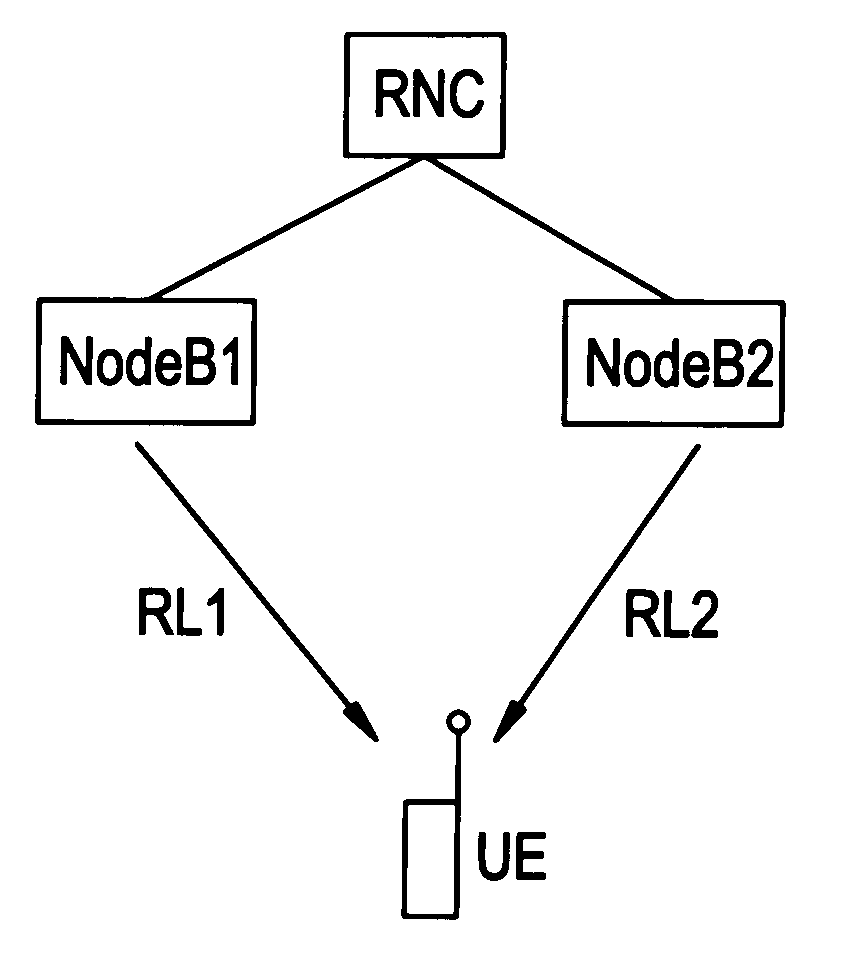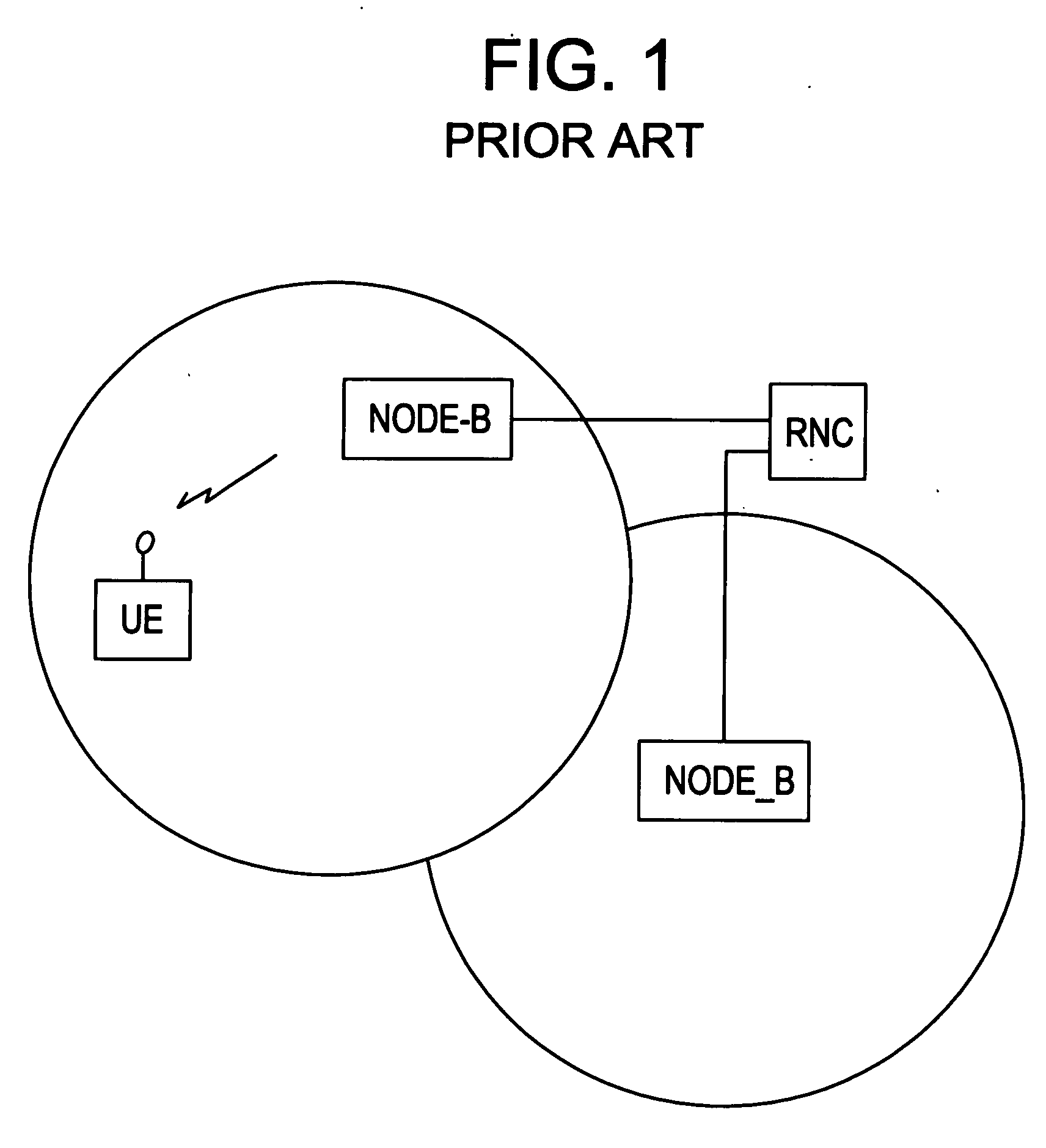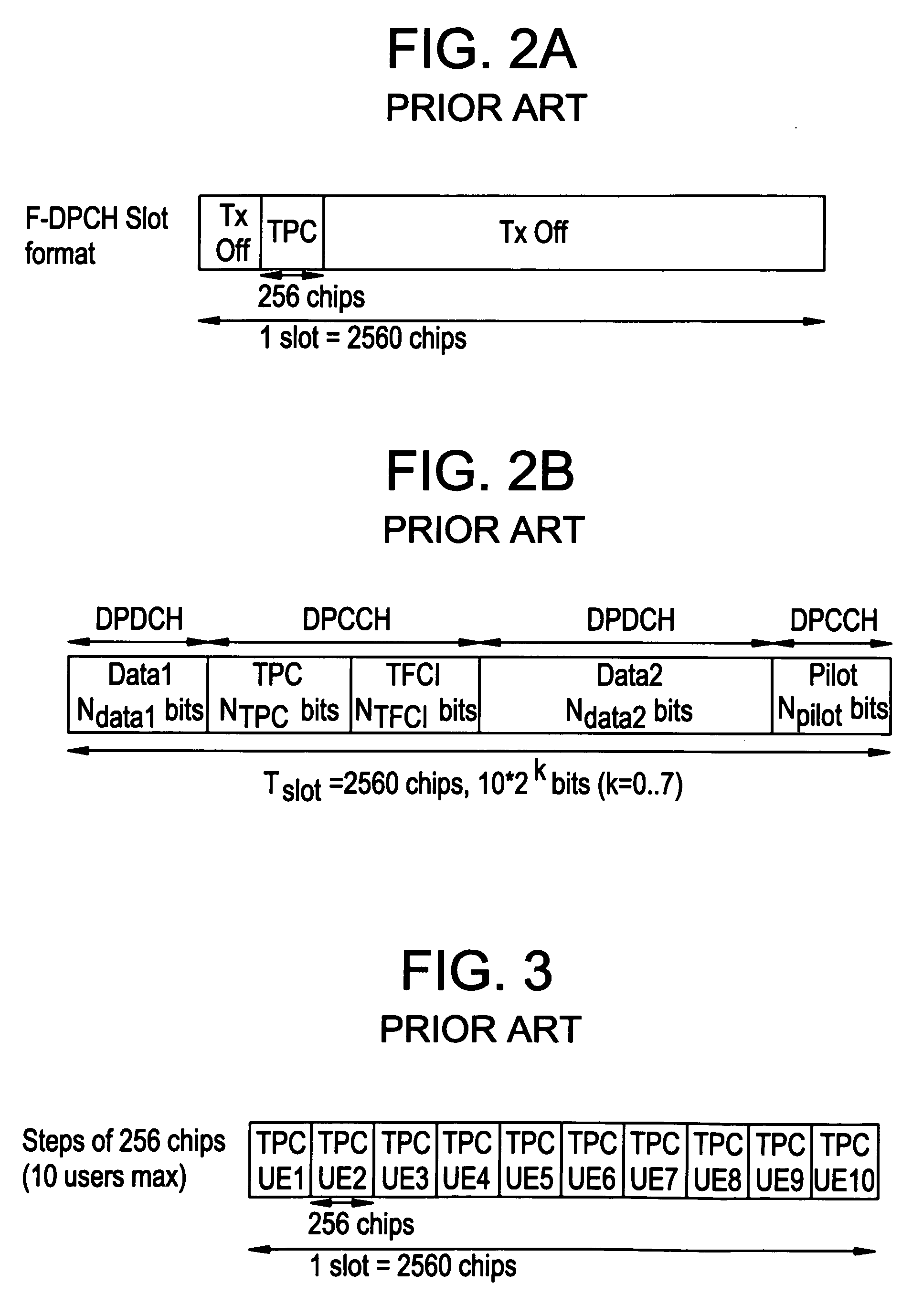Method of managing use of channelization codes during soft handoff
a channelization code and soft handoff technology, applied in the direction of power management, synchronisation arrangement, wireless commuication services, etc., can solve the problems of ue not being met, tpc bits received from two different nodes may drift,
- Summary
- Abstract
- Description
- Claims
- Application Information
AI Technical Summary
Problems solved by technology
Method used
Image
Examples
Embodiment Construction
[0021]FIG. 4 illustrates an example of a UE or mobile station in soft handoff or soft handover according to an embodiment of the present invention. In this example, a first Node B1 originally serves the communication needs of a UE. Subsequently, the UE enters into a soft handoff operation in which responsibility for handling the communications needs of the UE is to be transferred from the first Node B1 to a second Node B2. The first Node B1 is often referred to as the transferring network station. The second Node B2 is often referred to as the candidate network station because the second Node B2 is a candidate to receive the mobile station. As is known, during soft handoff, there may be more than one candidate network station. The soft handoff process is well-known and will not be described in detail for the sake of brevity. Instead, the role of the RNC in managing the channelization codes during soft handoff according to embodiments of the present invention will be described in det...
PUM
 Login to View More
Login to View More Abstract
Description
Claims
Application Information
 Login to View More
Login to View More - R&D
- Intellectual Property
- Life Sciences
- Materials
- Tech Scout
- Unparalleled Data Quality
- Higher Quality Content
- 60% Fewer Hallucinations
Browse by: Latest US Patents, China's latest patents, Technical Efficacy Thesaurus, Application Domain, Technology Topic, Popular Technical Reports.
© 2025 PatSnap. All rights reserved.Legal|Privacy policy|Modern Slavery Act Transparency Statement|Sitemap|About US| Contact US: help@patsnap.com



